Maria Balabaș is known for her involvement in music and cultural projects in the Bucharest creative scene. She’s part of various experimental music and sound art project, with Avat’n’Gard, the improvised music collective, being the most notorious. Maria is also a very active journalist and has been doing her radio show, Dimineața Crossover at Radio România Cultural, since 2008.
Together with critic and contemporary art theoretician Daria Ghiu , they started the project Sunete care umblă (literally sounds that walk), a bold move that brought sound walking to Bucharest, with unexpected success. These walks, conceived by Daria and Maria, invite the audience to discover the city through its soundscape, within carefully curated routes. They also feature contributions from selected artists and musicians.
We had a talk with the two in order to learn more about this fascinating project.
Hello Daria and Maria! First off – why sound walk? How did this project begin?
M.B.: We have 5 years of sound walks already!
D.G.: Indeed, the project started in summer 2011.
M.B.: We began doing the walks without a plan in mind, first time at Street Delivery. At the time, we didn’t think we would continue, we thought we should see how it goes, how we’d feel… It was a very good experience, we had very positive feedback every time and it just went on from there: we do a walk, then someone invites us to another event and so forth. Everything happened quite organically.
The initial idea happened while I was at Ars Acustica Festival in Prague. One of the guests organized this sort of walk, which impressed me very much. When I went to talk to her and let her know how moving this had been for me, she told me “Maria, but you too could do this sort of walk yourself!”. This encouragement motivated me to start this project. Coming back to Bucharest, I got in touch with Daria and we started doing a little bit of research, trying to figure out how we could approach the subject from a theoretical point of view, what was the history of this sort of practice and what we could bring to the table.
How did the two of you meet? Were you already friends/collaborators?
M.B.: I knew Daria already from the radio, since we were doing the Dimineața Crossover show together. We got closer once we started doing the walks, going on to do more and more things together over time.
D.G.: I’ve been doing a segment on contemporary art on Dimineața Crossover (Radio România Cultural) since 2009. Maria knew my interest in sound and radio art, since this was my field of choice.
The sound walks were something missing from Bucharest life, this type of guided tours focused on something other than sights, buildings or monuments. Besides this novelty factor, what attracted me to this type of walks is that they are closer to contemporary art shows and curatorial projects than to actual tours.
Daria, you have a background in contemporary art history and theory, while Maria is more of an artist/practitioner. How do you think this coming from two different worlds influences the way you work together?
M.B.: We did get much closer through the walks. For me it’s been a completely new experience – it’s very relaxing to be able to walk with somebody down the street and have a friendly conversation.
Daria, coming from the contemporary art world, balances out my enthusiastic, intuitive approach. I feel like my spontaneity works very well with her more cerebral take on things. It’s a very natural collaboration; I never felt any tension, any negativity coming from either of us. It’s always been a dialogue that is first expressed verbally at the beginning of the walk, continuing through silence for the rest of the journey.
Very interesting point! You two seem to be on the same page. And still, Sounds that Walk – who came up with the name?
D.G.: Why Maria, of course! She’s the real title master.
How were your first walks and experience? How did these evolve throughout the years?
M.B.: The walks always resulted in very strong reactions. Even after all his time, I still ask myself every time: “How will it go? Will I be able to hold the group? What kind of sensations will we experience this time? What is going to happen to us?”.
We started off from the idea of getting to know the city from a sonic perspective, since the visual aspect is so powerful that it remains our main view on the place. This sound approach has evolved into a form of poetics in itself: for each walk we choose a series of artistic moments. These can be interventions by fellow artists and musicians, or we try to shift the focus towards specific sounds or places.
In choosing our itineraries, I always try to build an emotional route, to capture a certain poetic sensation of the place.
In time, our involvement becomes more and more subtle, letting things happen by themselves. For example, at the first walk we did for Street Delivery, these moments were a bit too obvious: we entered a bakery and asked everyone to buy a 1 leu bread.
During our walks from the summer of 2015 at ArCuB, we thought things out differently, playing with our personal and emotional background more: trying to think in terms of what did these places mean to us, what childhood memories we could associate with them…
I would like to ask you about your process: how do you elaborate the walks? Do you visit places that have a special, emotional meaning for you or are you just looking for the sonic potential? Do you do location scouting together, for example?
M.B.: We always conceived the routes taking the given event and the area it was located as starting points. When we did Street Delivery, we worked with the area around Arthur Verona street and the Grădina Icoanei park, for the invitation at Femei pe Mătăsari (Women on Mătăsari street), the streets Mătăsari, Agricultori, when Raluca Voinea invited us at Tranzit.ro/Bucharest, we explored the cluster of streets and places around Carol Park, such as Gazelei street, the Filaret bus station, Patriarch’s Hill, for the WASP section during Xplore Dance Festival – the industrial area around Timpuri Noi…
Coming back to ArCuB, which recently moved in the Lipscani area, we elaborated the walk starting in the old town, reaching the Intercontinental hotel very intuitively, while being responsive to all the things we observed along the way: “Oh, what if we went that way? What if we took a right here?” and so on, discussing the sonic potential of each space we entered.
D.G.: We then focused on exploring this idea of the passageways of Bucharest, so present on Calea Victoriei, with Walter Benjamin in mind. Another very important aspect for this last project was having a production budget for the first time. This way, we were able to pay the artists we wanted to collaborate with, which made the entire experience feel more complete.
Sound walking is a practice initiated by R. Murray Shafer in ‘70s’ Canada, that has suffered many embodiments since: from artist Janet Cardiff’s Audio Walks, who introduced the narrative aspect and worked with binaural recordings, Francisco Lopez who did blindfolded walks, musician Christina Kubisch’s Electric Walks, using the sounds produced by electricity in the city, back to Hildegard Westerkamp, one of the first explorers of sound walking, who recorded her walks and turned them into radio art. How did you find the current format? What did you do in order make it your own?
M.B.: We chose to add our own interventions in the public space, as well as inviting other artists and musicians to join us.
We don’t particularly seek out to be personalizing the practice, but rather to offer a suggestion that would draw listeners closer to a certain type of experience. There are certain places in the city where your memory works differently and these sonic experiences also help in discovering the space around you. Also, especially in Romania, where the audience is not familiar with this kind of practice, these interventions offer some sort of in, an openness that leads to new dialogues.
Of course, there are plenty of unexpected things happening, coincidences that lead to very interesting situations that we later assume or incorporate in the future. During one of the walks at Timpuri Noi, when we reached a bridge, we offered people jam (a common Romanian hospitality custom n.a.) and we played a recording of Tiţa Bărbulescu, Ceauşescu’s favorite singer. For the same walk, we invited Miron Ghiu, Daria’s brother, to do a sound intervention on the same bridge. It was a rainy day and the water was flowing really hard, and the sounds that he made with a playstation, some circuit bending and other crazy stuff were perfectly in synch with the sound of the water, it was amazing! This showed us how the same space could generate a completely different atmosphere. Things during the walks happen organically, but, at the same time, there is a sort of complicity between us and the participants.
During another walk we entered an underground parking lot, the most banal and devoid of personality pne can imagine, then all of a sudden we got out in the hotel lobby of the Intercontinental. It was very surprising both for them and for us, each and every time we repeated the walk.
How do people react when you ask them to walk together in silence? How easily do they get to join the game and how do the sound/musical interventions facilitate this process?
M.B.: I believe that silence plays a crucial part. At the same, it doesn’t create a divide between the participants and the organizers; on the contrary, it brings them together. These practices could be really extreme abroad. In our case, thanks to the interventions, we found a way to draw the audience closer to us. Ultimately, you don’t have to go out of your way trying to be exclusivist and scare people away, but the other way around : to make them discover, to have them want to come back to those places, to seek out the sounds of their own cities, to be more attentive to the world around them.
You already mentioned a couple of interventions, but I wanted to ask: what memorable projects could come to mind? What other artists did you collaborate with?
M.B.: We usually choose from a group of artist and musician friends, a very diverse bunch. During the walk at ArCuB, artist Daniel Djamo came up with a story about migration, a monolgue from one of his films that we played in the Vilacrosse passage. At WASP, there was someone playing tibetane bowls and we had Cătălin Milea from the band Timpuri Noi on saxophone. And on every tour we walk around with portable stereo…
…oh, some sort of Bucharest ghetto blasters?
M.B.: Ahaha, indeed!
Speaking of Bucharest, a place full of all sorts of extremes that a lot of people view as a hostile, noisy and polluted environment, what is your relationship with the city?
M.B.: I think that through these walks we managed to rediscover the city and get closer to it. It’s something very personal; you work with your emotional memory, you accept it as the place of your childhood and later you discover that you can work with it in many different ways.
I feel that it’s a place full of opportunities, with a lot of things still left to discover. I believe that we’re being fed this image of the city as a hostile environment and people are just being influenced and react to this rather than trusting their own sensations. We’re being aggressed by our own frustrations, focusing on what happens to us and our worries, projecting this onto the environment.
A sound engineer friend of mine recently came to visit Bucharest and told me it was one of the most calm capitals he’s been to.
What sort of feedback did you get from the participants after the walks?
M.B.: We had very surprising and positive reactions: the people involved were always quite amazed and had many unexpected reactions, describing a feeling of peace at the end.
The strongest feedback was during our ArCuB walk, where we had a lot of new and unknown participants that renewed our belief in the importance of this project. The thought of walks in silence could seem difficult, but if you accept it, the result is surprising. Many of them described the experience as a meditation.
How do you choose the participants? What kind of people show up after an open call?
M.B.: We have a mix of friends and new people every time, but lately I’ve been pleasantly surprised to see more and more fresh faces. There is also a great deal of people who come back for other walks too!
From what I’m hearing the people who do the walks seem happy; but what is the reaction of the people you meet along the way? Have you ever had any unpleasant reactions?
M.B.: Yes. Once we were in the English passage and our friend Mehdi Aminian was playing the pan flute when the ladies upstairs threw a bucket of water over us! This has been our only major incident, people don’t really interact with us in general.
D.G.: Despite being in a public space, destined for circulation, people took some sort of ownership of this passage, seeing it as their courtyard that belongs to them entirely. I feel that this sort of publicat-private dynamic is very important for a city like Bucharest.
Disgruntled local housewives aside, I have the feeling that the interest for sound walks seems to manifest especially amongst women: Janet Cardiff, Hildegarde Westerkamp, Adrien Piper etc. Why do you think this happens, despite other sound fields dominated by men?
M.B.: I think it may have something to do with a sort of female empathy – we’re more intuitive, more careul in general. Women feel the need to work with the city and public space differently, less intrusively. It’s probably also a question of being meticulous, patient: through these walks and observations you have the feeling of cross-stitching the city.
You have already 5 years of doing the walks; what other projects do you have planned for the future?
M.B.: At this moment we’re preparing for a workshop during a film festival for people interested in working with sound differently. Then we’ll have to see what the city brings to us!
Thank you so much Daria and Maria! Any last thoughts?
M.B.+D.G.: Thank you Andra! We would also like to thank all photographers who accompanied us during our walks!
POSTED BY
Andra Nikolayi
Andra "Amber" Nikolayi is a sound artist and researcher. They did a masters on the use language in experimental music at the Art History and Aesthetics department of Université Paris 8 and received ...
andranikolayi.tumblr.com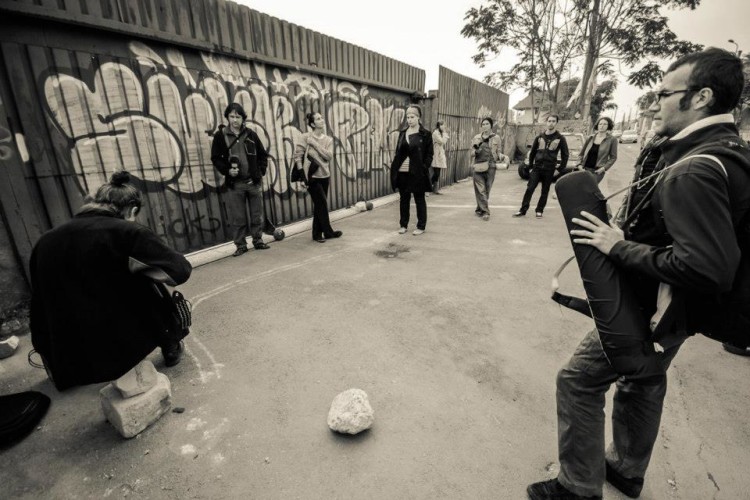
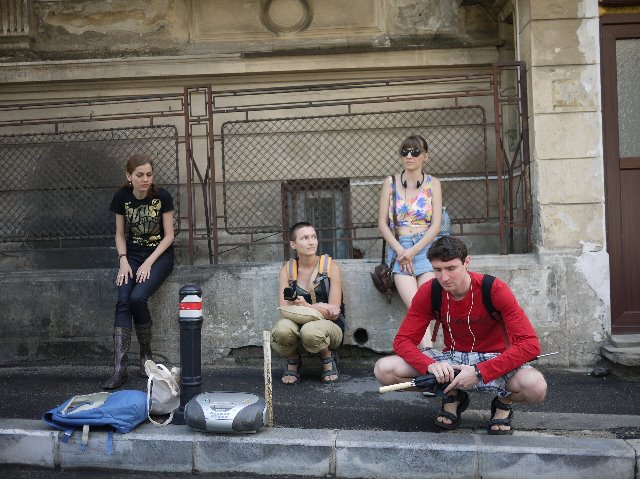
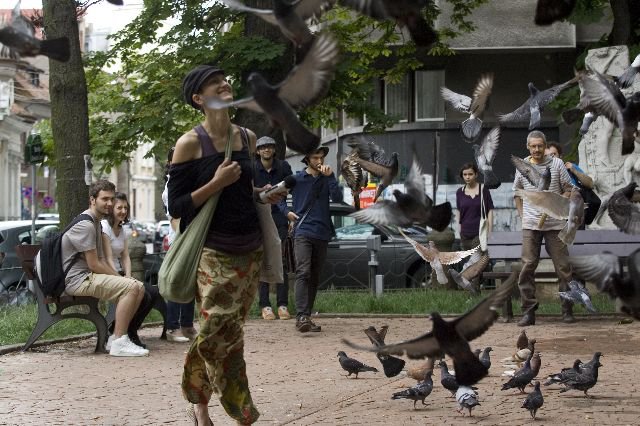
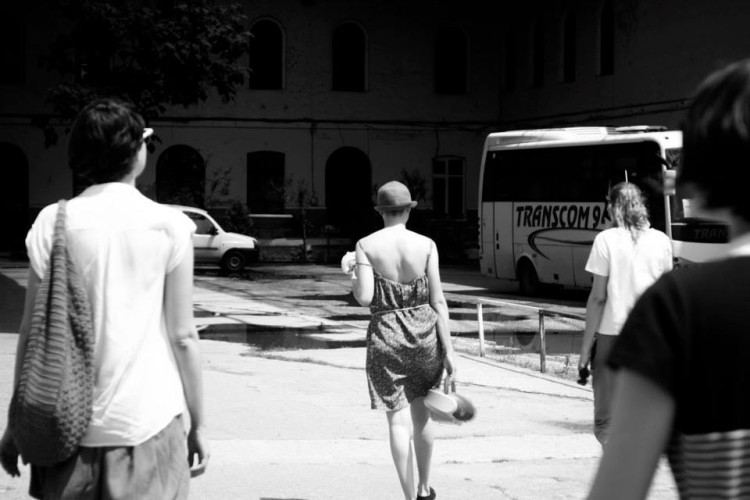
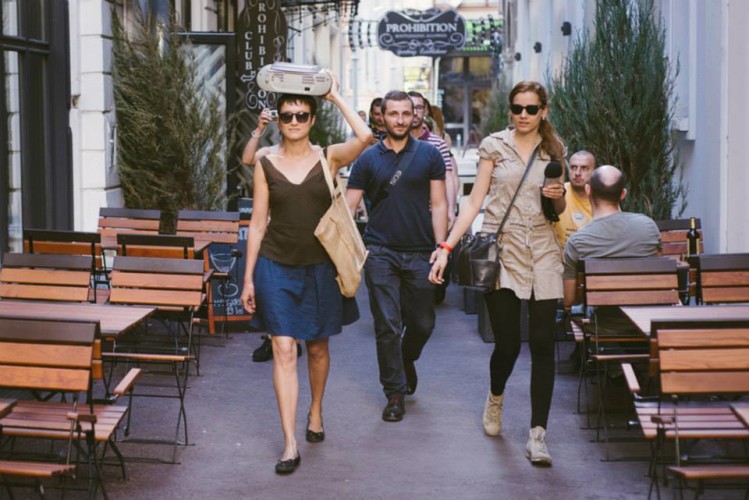
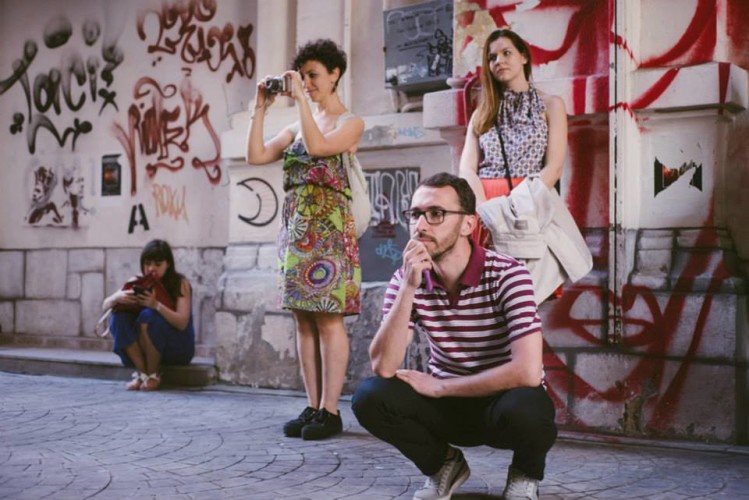

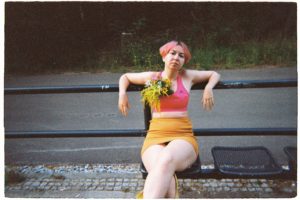
Comments are closed here.